Christmas traditions in Italy,
including the dreaded brodo!
and why you'll be wearing red knickers on New Year's eve!
Christmas traditions in Italy - and New Year's Eve ones too - you may, or may not wish to replicate at home! And what lentils and red knickers have in common.
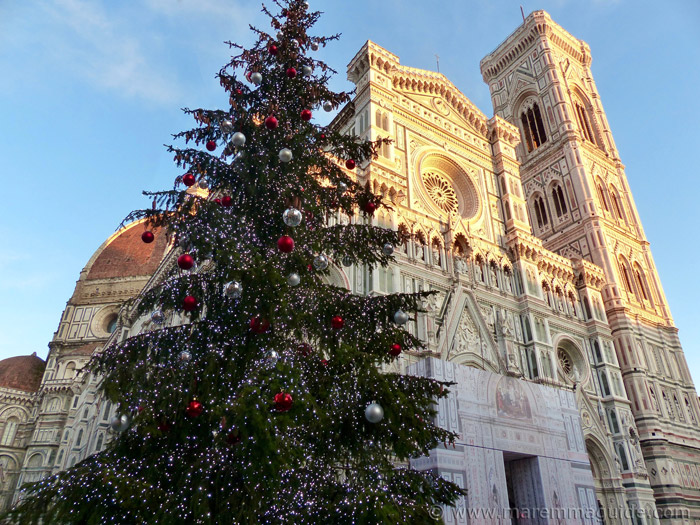
It all starts...
The Christmas trees and lights
The festive season in Italy starts on the 8 December, the Day of the Immaculate Conception. A National holiday.
In all good organised Italian households, the tree goes up and the lights go on. But I'm invariably a bit late (sometimes very late, like Christmas Eve) in doing this!

The Italian nativity scenes - the "presepi"
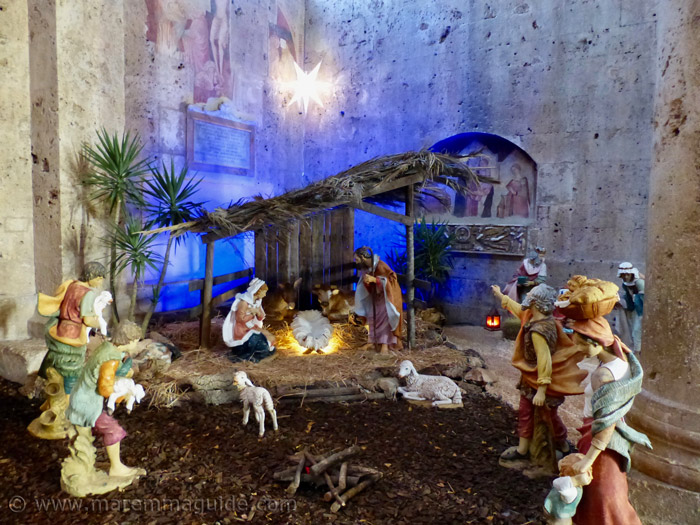
And tiny "presepi", traditional nativity scenes, lovingly constructed in wood and filled will appear in the corners of rooms. And larger ones, often man sized, in the corners of town squares and inside cathedrals and village churches.
Christmas Eve and the "la Vigilia di Natale"
Now, Christmas Eve the Italian way, all depends where in Italy you are living.
For some, the Christmas meal is eaten on Christmas Eve night, the "cena della Vigilia". And a vigil takes place from late evening until dawn on Christmas morning.
In my part of the world, in Tuscany, everyone usually eats dinner at home or at a friend's, and then head off into the piazza to gather with the rest of town before heading into church for Midnight Mass.

The Italian Christmas Eve dinner
What's on the menu for the Christmas Eve dinner? Well, that depends where you are too. But, unless you happen to be one of those eating your main Christmas meal that night, you'll be eating "light"! In preparation. And avoiding meat.
In the south of the country, especially in Sicily, you'll be treated to different fish dishes. Especially "baccala", salted cod.
The Italian Christmas dinner and the local legislation
First-up, I have to say that to say that to call the midday meal on Christmas day in Italy "lunch", is a misnomer. It may start at lunchtime, but it continues right through the afternoon into the evening.
15 or shame
Course after course after course. And there is a minimum number of those courses, under which no respectful Italian woman will fly. In Florence the due number is no less than fifteen. Yes, 15. Plates, bowls, and more.
Laden with lovingly tended homemade food. Full of flavour and calories.
The average Christmas dinner will add 3,000 calories to the day. And that doesn't include the Prosecco, the wine, and the essential in Italian life, end of meal alcoholic digestive drink. Nor the chocolates!
The money for the meal will have been put aside for months, sometimes throughout the course of the whole preceding year. And the shopping started weeks before the day. Carefully selecting the sweets and pastries. The pannetone, the pandoro, the panforte, the "il torrone" nougat, the cavallucci biscuits, walnuts, and more, that begin to fill the supermarkets and local pasticceria from the beginning of November onwards.
The dreaded brodo
Loved by everyone. Except me.
No proper Italian Christmas dinner is without the dreaded "brodo". The homemade broth. Which I first encountered at the dinner table my then to be Italian in-laws.

Boiled-up the day before by "nonna", with the centuries old traditional ingredients - one carrot, one slice of celery, one tomato, half an onion, a cut of beef (muscle), salt, pepper, and water. Served with Cappelletti pastas floating in it. And greeted by all around the table, bar me, with huge gleeful grins and spoons desperate to dig in.
To me it looked like dishwater with ravioli in it. Blasphemy. I know.
I feel I need to explain. I'm no stranger to stock; I've boiled-up a fair few chicken carcasses in my time for stock for soups etc later. But I'm a UK woman who, for as long as she can remember, has always eaten roast turkey, with all the trimmings at Christmas. And for supper, a slice of boiled gammon and toast. Well, you get the picture.
So. Having already faced (and refused to do again) the traditional Florentine panino with "lamprodotto" (boiled cows stomach) saga which my Italian man couldn't wait to introduce me to. And seen black things arrive on a silver plate with what I thought my eyes were momentarily having me believe were beaks, arrive on a huge silver plate at another dinner with his cousins. They were! And there was nothing less for me to do but make my excuses to go to the bathroom.
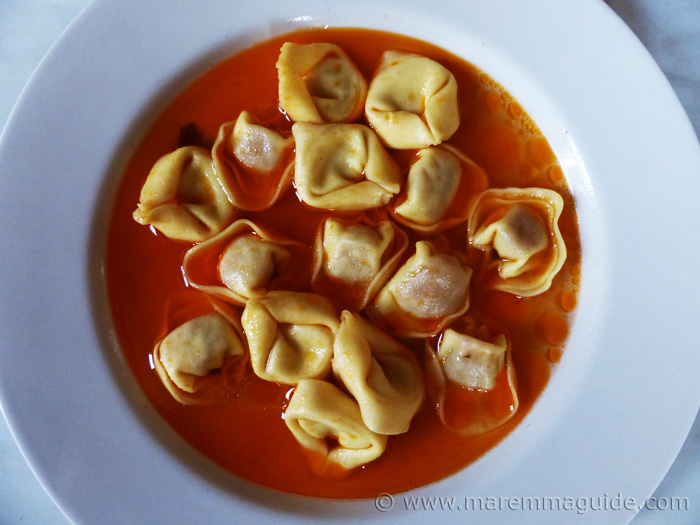
I gave this bowl of transparent liquid, brodo, a go. Having ascertained that that was dinner. There wasn't anything else coming out of Alvara's kitchen that night.
NOTE: The day I took these photos, my husband decided to add a piece of chicken, and tomato puree. Which is why the brodo isn't transparent. The change to the usual - and best apparently - didn't go down well with our daughter.
I didn't succumb under the pressure of enormous Italian generosity (and bewilderment at my refusal I have to say) and accept a second bowl. And I have never been served with it again. There has always been something else prepared for me. (Fabio had a word in his mum's ear. Bless him.)
I know that I'll forever be considered a "stranieri" (foreigner) for my sin.
Our daughter, on the other hand, adores it. :) Which she and her dad cook-up every time together whenever they know I am going to be out of the house for the whole day. They even start planning the whole thing days before if they get wind of my pending absence! Opening the windows in the house afterwards in an attempt to get rid of the evidence!
Am I exaggerating?
Nope. The stink as it cooks is nauseating.
The scientist in me tells me that all but 99% of the vitamins will have been destroyed in the minimum 2 to 3 hour simmering session it takes to make a "proper" brodo. But that doesn't stop my Italian husband insisting otherwise. And both he and our daughter going gaga over the thought of a bowl of brodo with its tiny pastas floating inside. Plus the obligatory, stirred in - so it looks like lumps of yellow goo - soft triangular cheese.
Be honest
Be honest now. Would you look forward to a bowl of brodo as the highlight of a Christmas dinner? Enough said.
Italian Christmas food:
the sugar and spice and all things nice

This is one Italian Christmas tradition that I don't have a problem honouring! The Christmas "dolce". The spiced and candied Sienese Panforte, Panettone with dried fruits or chocolate. Even hollowed out and filled with "gelato". And the trays of beautifully wrapped Italian Christmas biscuits.
It's at Christmas time when Tuscans take almonds to heart and bake Cantucci and Ricciarelli cookies.
And when they have been devoured with a glass of sweet Vin Santo wine, the fruit bowl arrives. Piled high with Clementines, figs, dates, and walnuts.
And then the chocolates. Lots and lots of chocolates.
All washed down with with Prosecco and Spumante. Of course.
Italian Christmas cookies - the recipes
The best Italian Christmas cookies recipe and the "nonna's" Tuscan almond biscotti recipe.
A typical Italian Christmas dinner menu - the "Pranzo di Natale"
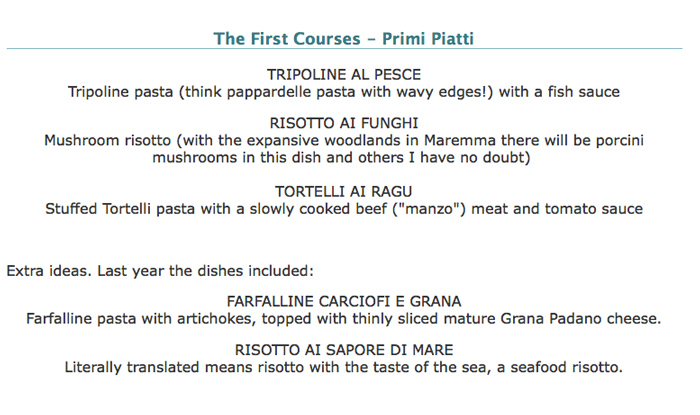
Take a look at the whole menu.
You'd be wrong to think this
And if you think that a really good long walk after dinner will burn off the extra calories you have consumed, you'd be wrong!
Two hours of exercise, running a distance of 10 kilometres, will only consume around a 7th of the calories of that Italian Christmas dinner. You will have to do it again and again to make headway into the alcohol and candy calories!
The Salute!
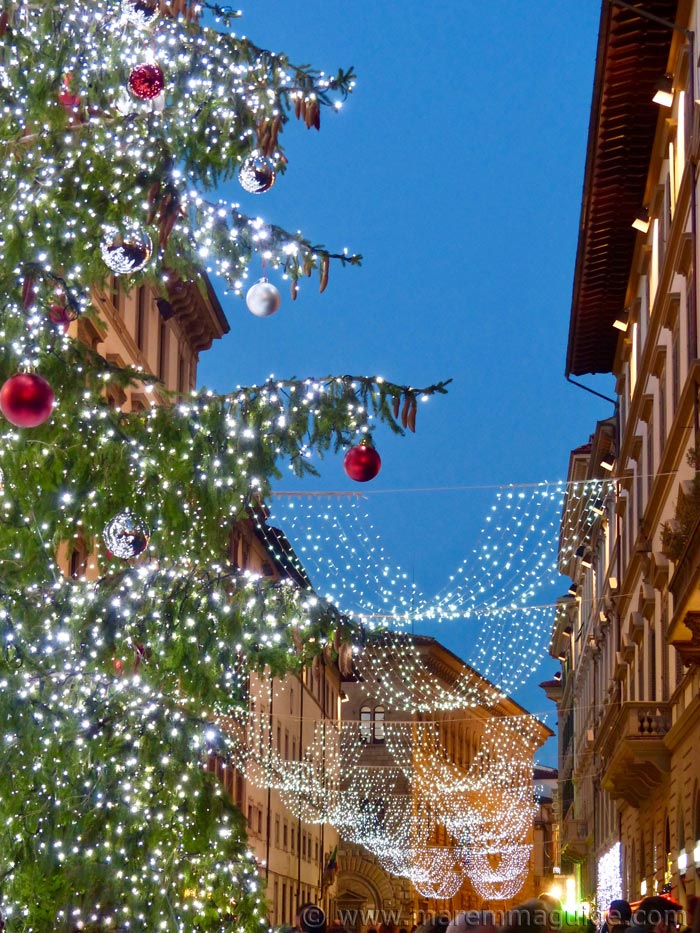
This one is a Christmas - and New Year - tradition that anyone and everyone with a mobile telephone participates in. All day long.
It takes an Italian to express festive cheer and good wishes properly. With everyone on their contacts list. Phones start pinging "message received", and ringing from the waking until well into the early hours.
"Buon Natale"
"Auguri", auguri".
And if you thought that that would be it for the year, covering both Christmas and New Year, in one. It isn't!
How to say Merry Christmas in Italian and a Happy New Year, together every other festive phrase you might need to write those Christmas cards and see you through the season.
The flying Italian Christmas witch.
More important than Santa
In the majority of Italian households, "La Befana" - or to you and me, the Italian Christmas witch - is still more important than Christmas. But just.
It's not that Santa Claus and Christmas Eve/Christmas day aren't anticipated with hope of "regali" - presents. It is just that this 11th century Christian tradition marks a "formal" judicial decision that every Italian child wants to know.
Whether they are to be declared as having been "good" or "bad" during the year.
La Befana - the flying "strega"
For La Befana, the flying old "strega" (witch), can be found in the night sky on the eve of Epiphany. And down chimneys. Delivering stockings. Stockings filled with presents and "caramelle" (candies and sweets). A lot of candies.
If a child has been good.
If they haven't. Then lo behold, they will find that she has been and delivered lumps of coal instead. Once real, but now candy coal.
Would you make your kid wait?
How long do you make your children wait before they may open their Christmas presents on Christmas day? Can they open their stocking or sacks, the presents under the tree, in the morning? After lunch? Or at dinner time?
But would you make them wait another 12 days!
Because in some Italian families, it is on the night of the eve of Epiphany when they will receive the bulk of their presents. Having received only one or two on Christmas day. (As a consequence of the pressures of TV publicity and pressure.)
Could your children wait that long?
But, how about 15 days early?
Would you give them 15 days early? As mums do in Bergamo in northern Italy, on the night of the feast of Santa Lucia (the Christian martyr, Lucia of Syracuse). On the 13th of December.
There is much suspense and talk amongst my daughter's friends on the night of the 5th of January. Will their misbehaviours have been considered sufficiently bad? Or will they have been forgotten. Will they wake to a stocking full if treats. Or black sugar?
She is still of an age where it seems to me that this "report" carries more weight for her than her end of school one!
When once they would have compared notes the enxt morning, in the playground or street outside. Nowadays they are on Whatsapp the moment the sack has been discovered and opened. Sending photos of what they found inside.
Caught out
Now, in my first year as a mum in Italy I have to admit that I got caught out. As, notwithstanding having an Italian husband - he completely forgot to mention La Befana! - I didn't realise the significance of the witches on broomsticks pinned to the ceilings in shops from November onwards. And wasn't prepared. No stocking duly pinned up. No presents not already opened on Christmas day, nor candies she hadn't seen, in sight.
I hustled something together that night whilst she slept. But now I am!
And with the witch comes another dinner
As if your waistline hasn't bulged enough, just to be sure that things are well and truly celebrated as they should be, there is another, huge, dinner. This time less formal than Christmas dinner, but a marathon event nonetheless. With friends and family.
The Italian New Year traditions -
Capodanno and La Festa di San Silvestro
New Year in Italian is "Capodanno". And the night of San Silvestro.

Another humongous meal - the "Cenone"
The "Cenone". But this time eaten with friends. You have done the family thing. Everyone spends this night with their friends.
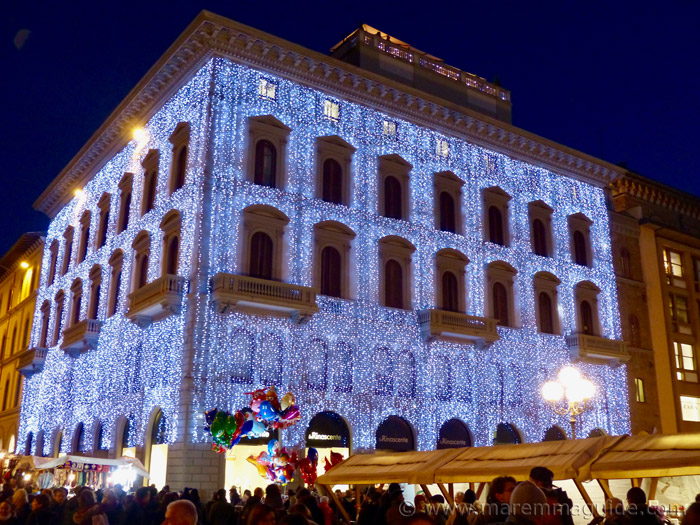
You are damned for 12 months if you don't
Don't even contemplate a New Year in Italy without eating "lenticchie".
Stacked on a plate looking like a pile of fairy money - which is, in fact, what tradition has them representing, money - eating them on New Year's Eve is meant to bring financial prosperity. Or at least, as we are talking Italy here which sits amongst the countries with the highest poverty rates, sufficient income to be able to live on for the next 12 months.
This tradition is a sacrosanct. No one. And I mean, no one, I have ever met in my many years of living in Tuscany. Like them or not. Has ever. Ever. Declined a plate of lentils on New Year's Eve.
No restaurant, osteria, pizzeria, or home would be seen not including them on the New Year's Eve menu.
Heaven forbid.
And they come served with...
Not for the faint hearted
Boiled feet. Pigs trotters to be precise. Stuffed.
I'll let you guess whether I follow that tradition!
For the less robust of constitutions, there exists a respectable alternative. A huge - again boiled - pork sausage. The "Cotechino". Served with those lentils. Of course.
Sometimes the sausage is shaped into the form of a trotter.
New Year's eve fireworks
Health and safety doesn't get a look in!

What may have started as a way to ward off bad spirits and evil is long forgotten in the ceaseless stream of firecrackers, bangers, and fireworks that continue throughout the night. And into the next day.
Everyone. Everyone. From toddler to granny. Sets off bangers from the windows of their apartments into the streets below. Today's equivalent of throwing something old out of the window.
Sometimes with paper napkins attached so that the street below in the morning looks like a colour chaos. I once woke to see a road in the historic centre of Florence strewn with purple - of course, being the Florentine colour.
When it just won't do if your "smalls" aren't red
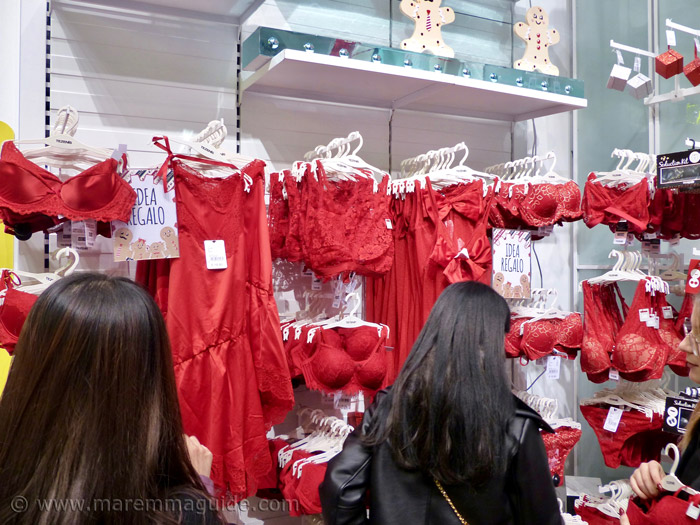
There's a good reason the shops are full of red lacy undies in the run up to New Year. You are meant to buy some for your loved one for them to wear on New Year's Eve. Apparently a new pair of knickers (or bra) etc adorned by you, but not brought by you, on the night will aid in warding off those evil spirits that the firecrackers don't get.
And bring you prosperity and good fortune for the year ahead.
I reckon that it is just a way for hot blooded Italians to get the year off on the right footing!
Which means any one Italian lady has a lot of red in her undies drawer! And men too! Because the tradition applies to both sexes.
That salute again
New Year's eve night is the time for that truly Italian "Salute!" again. But this time the whole country is really, really, going for it.
The first pings and rings start early evening. When you call those that you won't get a chance to see or reach when the Capodanno festivities are in full swing. Reaching a crescendo of phones in hand right up to the clock striking midnight. So much so that the phone companies tend to give their customers 24 hours of extra Gigabytes and a day of free texts to ensure that no one gets left out in the cold.
And it all ends...
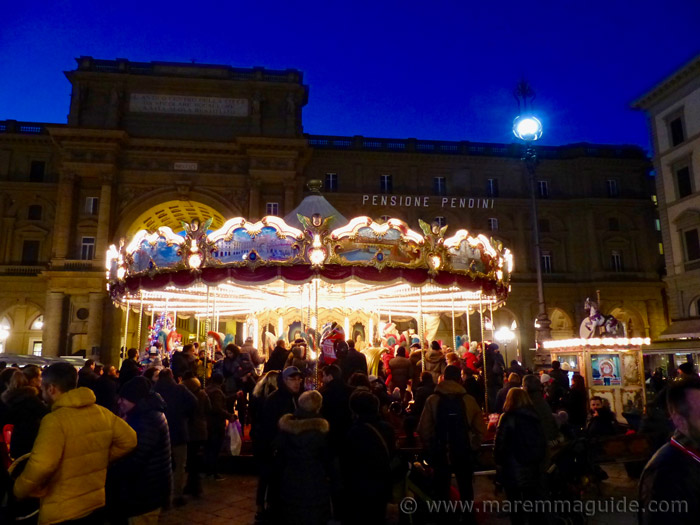
The whole festive period draws to a close on the twelfth day of Christmas, the Day of Epiphany, on the 6th of January. At which time the decorations and the street light displays start to come down.
Again, I tend to be late doing this too! But then mine often go up late so it all works out in the end :)
Explore some more...


















